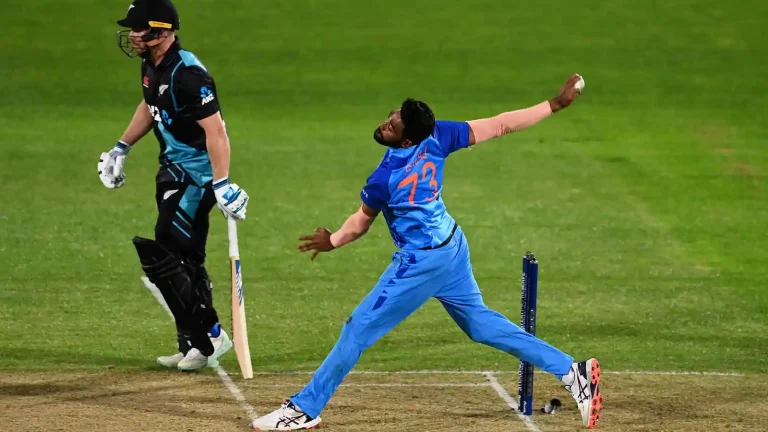Ultimate Guide to Understanding Run Rate
Run rate is defined in cricket as the number of runs scored divided by the number of overs delivered. Batting first, Team ‘A’ scores 260 runs in 50 overs. The opposite team bats second and scores at half the rate of the first team over the course of 50 overs. How many runs did the batting second team score?
Ultimate Guide to Understanding Run Rate – Run rate in cricket is such a mystery in the game of cricket betting matches.
200% Welcome Bonus | SPRIBE
200% Welcome Bonus | SPRIBE
- Easy Sign-Up and Deposits
- The Biggest Bonuses in India
- Available in four different Indian languages
Even fans of this game are often nervous when it comes to run rate. If you are not familiar with this term, you will notice that net run rate has become a buzz phrase during any cricket betting matches like ICC World Cup tournaments, the Indian Premier League (IPL), and other cricket leagues in India and all over the world.
In cricket betting matches, run rate has been categorized in three sections which are current, projected, and net run rate calculator.
Let’s unravel everything related to run rates and the so-called mystery behind it in order to understand the terminology even better. Let’s get started!
What is Run Rate in Cricket?
To fully grasp how run rate actually works, you need to understand what run rate is about. Run rate is a scoring indicator and derived from two key factors. The factors are the number of runs scored by a team and divided by the number of overs faced by the team.
How is Run Rate calculated?
To know how to do run rate calculation in cricket betting matches, all you need is the following:
- Runs scored so far by the batting team (including the extras)
- Overs faced so far by the batting team
Once you have had these two numbers, you can simply divide the former by the latter.
For an instance: If India is playing against England and India has scored 40 runs in 5 overs. You have to divide the total runs (40) by the total overs bowled (5). The run rate is 8 (40/5).
It is also known as Current Run Rate.
How to Calculate Run Rate in Cricket?
To calculate the run rate in cricket, you first need to determine the total number of runs scored by a team over a certain number of overs.
The run rate is then calculated by dividing the total number of runs by the number of overs that have been bowled. For example, if a team has scored 200 runs in 20 overs, their run rate would be 10 runs per over (200 / 20 = 10).
On how to calculate run rate in cricket, the easiest way is to use our free Cricket Net Run Rate calculator below:
That’s the fastest way on how to calculate run rate in cricket, right?
Projected Run Rate in Cricket (PRR)
Generally, run rates in cricket betting matches are classified into three sections. They are current, projected, and net run rate. We have explained how to calculate the current run rate in the previous example.
Now, we are going to explain to you how to calculate the projected run rate in cricket betting matches. This method is applied to all types of cricket betting matches in the world including IPL.
Obviously, projected run rates are different from current run rates. Other common names of projected run rates are PRR and estimated run rates.
PRR is a multiplication of two items, such as:
- The total number of overs
- The current run rate
For an instance: if India plays a T20 match with Australia and scores 40 runs in 5 overs. Then, the projected run rate can be calculated by multiplying the total runs scored by the total number of overs. The projected run rate is 160 (8×20)
What is Net Run Rate (NRR)?
The last run rate score is named net run rate. Net run rate is the key deciding factor in cricket betting leagues and tournaments, if a match ends in a tie.
Net Run Rate is a simple yet complicated calculation.
How is Net Run Rate calculated?
To know how to calculate net run rate, you must have these following two details.
- Average runs scored (per over) by a team in that league.
- Average runs conceded (per over) by a team in that league.
It seems simple but it’s actually not. To achieve this calculation, you must have the scorecards of all the matches played by the team throughout the competition.
After gathering these two pieces of information, you can subtract the runs conceded from the runs scored.
Let’s assume that a team doesn’t complete the quota of 20 overs in T20 or 50 overs in ODIs. In order to calculate the net run rate, the entire quota of overs will be considered.
For an instance: India scores 150 in 15 overs. India loses all 10 wickets within 15 overs. Now the run rate might look like 10 runs per over.
To calculate the net run rate, the entire quote of 20 overs must be included. India’s average number of runs scored per over is 7.5.
Let’s again assume that India wins the match. If India concedes only 130 runs in 20 overs, India’s average runs conceded per over is 6.5.
To calculate the net run rate for this match, we have to subtract 6.5 from 7.5. The net run rate is +1.00.
To reach this point of calculation, you need to repeat all the match calculations played by India in that particular tournament. Then, you will have the NRR of that team. Isn’t it clear for you?
Current Run Rate Formula (Current Run Rate Calculator)
Total runs scored by the batting team % Total overs faced by the batting team
This is the formula to calculate the run rate of any cricket match. It is applicable to all tournaments and leagues including T20s, ODIs and even test matches.
Projected Run Rate Formula (PRR Calculator)
Total number of overs of a match x current run rate of the batting team
All cricket channels use the same method. It is mainly applicable to T20s and ODIs.
Net Run Rate Formula (Net Run Rate Calculator)
Average runs scored by a team – Average runs scored against the team
For your note, this is only per over average. Please don’t take just one match. You need to consider the average runs throughout the league or tournament.
Usually, the commentators get excited about the wins with big margins because it gives the winning team a huge run rate.
Generally speaking, when two teams end up with the same number of points, the team with a better run rate will be given a higher position in the points table.
However, there are instances where teams failed to qualify. It was mostly because of their lower run rates even when they had an equal number of wins and an equal number of points!
This case happened in a real life game in the T20 World Cup 2022 points table. South Africa has faced similar situations many times.
The total runs conceded is as important as the total runs scored. The par score in a venue is evaluated. At the same time, teams focus on reducing the required run rate.
This is one of the reasons why having higher run rates is so extremely important in cricket betting matches. Bettors are advised to understand these terms and they work in order to increase their chances of winning in cricket betting matches.
Run Rate in Today’s Cricket
Cricket betting matches have been known as a run rate based game. ICC T20 world cup is one of many examples. In a betting match, team A wins the toss and elects to bat first. The two key objectives are as follows:
- Setting a final target score
- Restricting the opponent team.
In the same match, team A wins the toss and elects to bowl first. The two key objectives are:
- Restricting the opponent to a lower total
- Chasing it down at the earliest possible
To have a stable gameplay, it is important to always maintain a healthy net run rate in order to help the group stages and even in Super 12.
Healthy run rate also helps in improving future performances of a team. There is also an annualized run rate of a team to be considered even if it never affects their position in a particular tournament directly.
Hence, the average run rate of a team throughout the year is also crucial because the ICC also considers this for ranking the teams in cricket betting matches.
Summary on Run Rate
If you understand run rates as a whole from current run rates, projected run rates to net run rates, it will be easier for you to analyze the cricket betting match situation.
This knowledge is not only for cricket fans but also for cricket bettors in the world. It will help you tremendously to win the game of cricket betting matches in a more significant way.
Keep in mind that all T20 run rates calculators are the same as the IPL run rate calculator.
We have also discussed run rate in detail earlier and have explained to you different types of run rates in cricket betting matches and how to calculate them with examples.
Up to 75% Reload Bonus on Aviator
Up to 75% Reload Bonus on Aviator
- UPI, Paytm, gPay & PhonePe withdrawals
- The Biggest Bonuses in India
- 300% Welcome Bonus up to ₹10,000
To do your own calculation, you can use the given formulas above. You just need to follow the step-by-step calculation with live scores in cricket betting matches.
You can also evaluate your calculation correctness by checking the scorecards shown on the TV channels or cricket betting sites. For more detailed explanations of cricket run rate terms, you can visit 7Cric Guides.






